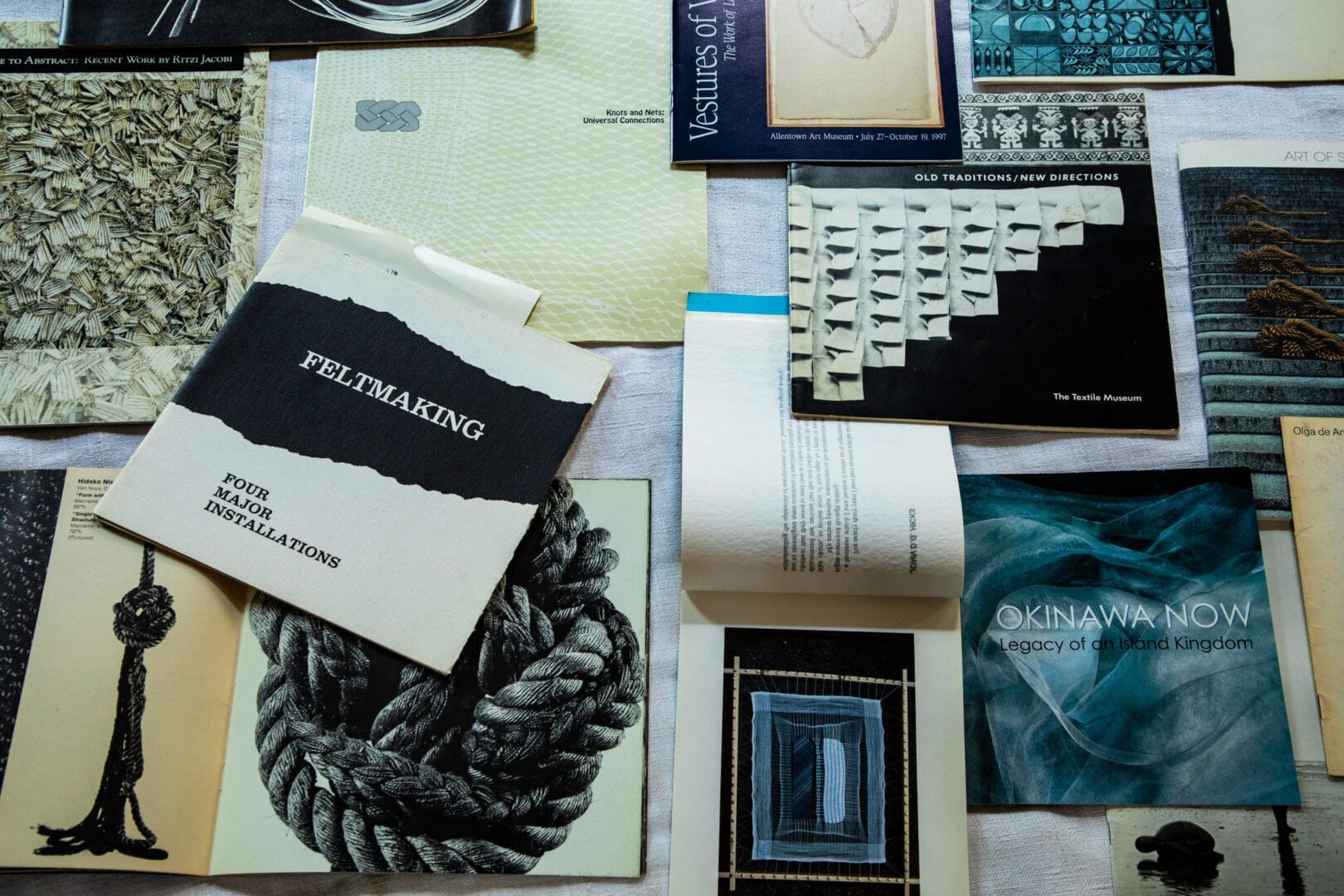
I just finished cataloguing over 300 Exhibition Catalogs in the library. Different from the more fixed qualities of larger book projects, printed exhibition matter feels current and cutting-edge – a fresh response to a theme or period in time.
As a librarian and archivist I can sense something’s historical richness and research value. These particular materials were originally gathered over a lifetime by textile artist and teacher Carol Westfall, and arrived at BLUE as part of her acquired library in 2017. I was profoundly impressed by the breadth and depth of the collection, in addition to the wealth of creativity and skill so vividly on display. Primarily ranging from the 1970s-2010s, with some dating back to the 1950s, the collection is a sweeping survey of avant-garde fiber art and artists. The catalogs trace the evolution of the fiber art movement, and simultaneously highlight interesting work being done in the overlapping fields of fashion, paper art, basketry, soft sculpture and other handcraft, thereby firmly positioning fiber as a relevant medium in the historical canon of craft.
Carol lived and worked in New Jersey, giving the collection a northeastern U.S. focus, although she traveled, exhibited, and collected far beyond that. The exhibits stretch across the country, with some stops overseas, detailing shows taking place at colleges, museums, galleries and festivals. A wide range of events are included: juried and thematic exhibitions, showings of private collections and student work, craft guild presentations, and solo shows. The work of fiber artists now regarded as pioneers of the field sit alongside lesser-known names waiting to be rediscovered. Some feature Carol’s own work, situating herself within this dynamic movement. Many are art objects in and of themselves, printed matter that expand upon the book form in beautiful and delightful ways.
Taken together, the collection showcases the enduring power and creativity of the discipline, of women (and men) taking gendered traditions out of the home, borrowing and building off techniques found across the globe, challenging our ideas of what’s beautiful and possible, and responding to the times with political and feminist critiques. It is clear the collection has the most value as a distinct body, maintained as a singular unit, rather than separately integrated within the other books on BLUE’s shelves. I can imagine how inspiring and instructive this collection could be in the eyes and hands of fiber artists, students, and researchers – anyone with a more panoramic curiosity about where the field has been, and where it might be taking us.
And so I invite you to come and enjoy these unique artifacts, to hold them, learn from them, and let them transform you – as is their potential power.
